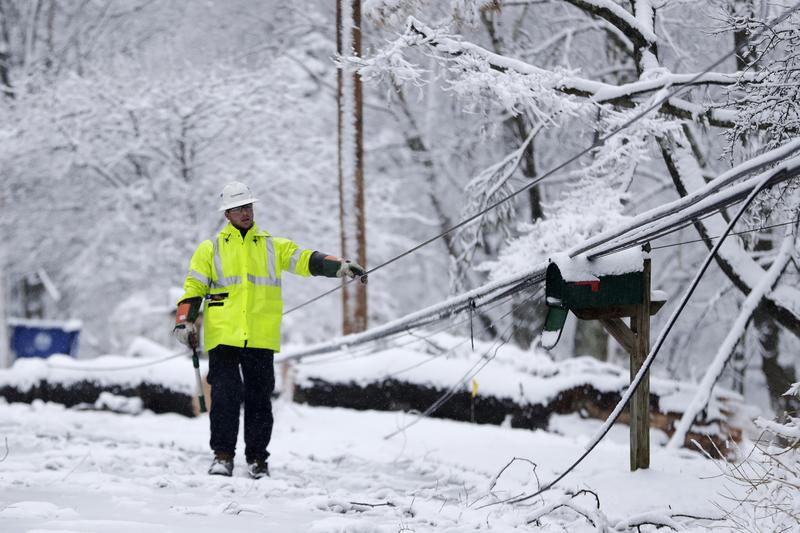
You know the drill: A big storm comes through, knocks down trees, which knock down utility lines, and homes are ultimately left without power. Over the past seven days, it's happened twice—and some of the homes that lost power from the first storm hadn't even gotten it back by the time the second one hit. Now, some 136,000 people in New York and New Jersey can't turn on their lights.
Is this just inevitable with bad weather? Or did the utility companies drop the ball?
"Storms like this are always a problem, no matter what preparation you go through to avoid their impact," Matthew Cordaro, a former utility CEO and board member for the Long Island Power Authority, told WNYC. "Especially when you have two in a row, one right after the other, it makes for a double-barrel attack that's hard to deal with."
Nonetheless, New York Governor Andrew Cuomo has railed against Con Edison and NYSEG, calling for an investigation, and New Jersey Governor Phil Murphy is attacking Jersey Central Light and Power. Cordaro sees that as little more than political posturing.
"Politicians express public outrage, I guess to demonstrate to their constituents that they're doing something," Cordaro said, "but the first priority for a utility at this stage—and even for public officials—is to restore [power] to as many people as possible, and not point fingers this early in the game."
In denser areas like Manhattan, downed power lines aren't much of an issue, since most power lines are buried underground. So, why don't utility companies do the same in Westchester County and the Hudson Valley?
"It's just too expensive," said Cordaro. "And given the choice, I'm sure customers wouldn't elect for that, because when you look at the overall reliability numbers, you're talking about spending huge amounts of money to save minutes of time in restoration."
Cordaro spoke with WNYC's Richard Hake.
